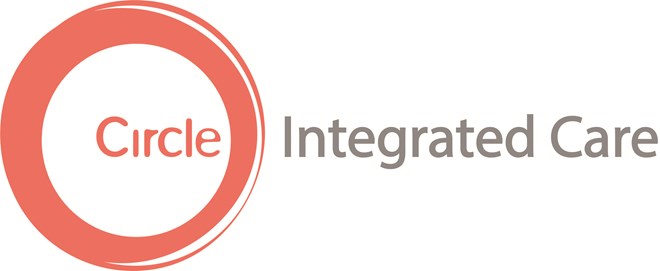Circle Integrated Care has been delivering end-to-end MSK services to Bedfordshire CCG, supporting the delivery of high-quality outcomes, writes Amanda Phillips
In 2011, Professor Chris Ham noted that there is good evidence of benefits of integrated care and that “Integrated Care in the NHS needs to be pursued at all levels to overcome the risks of fragmentation and of service users ‘falling between the cracks of care’”.
Integration has proven challenging given the evolving NHS landscape.
In association with

However, Circle Integrated Care has been running integrated services for the NHS since 2014. Through collaborating and working in partnership with local providers, it has demonstrated that, with the right leadership, integration supports the delivery of high quality outcomes while increasing treatment options and saving the NHS money.
Why commission integrated services?
If you look at musculoskeletal services as an example, Circle Integrated Care was commissioned as a result of challenges in the previous system including:
-
Demographic growth resulting in rising costs which were unmanageable and not sustainable for the system
-
Traditionally uncoordinated and inefficient services, resulting in a poor patient experience and poor value for money, with high levels of waste in the system. Indeed, outcomes of treatment were unknown and hard to measure.
-
Many patients not receiving appropriate treatment, with patients going for surgery who did not need to; there were a lack of conservative treatments available in the community and a need for support for early management in primary care.
The model
Circle delivers end-to-end MSK services to Bedfordshire Clinical Commissioning Group and Greenwich CCG, from GP referral to post-operative discharge and long-term condition management. It coordinates the system through a single point of access, working with the local providers to join up care.
Circle contracts with over 70 community and acute providers, delivering the full range of MSK services including: physiotherapy, orthopaedics, rheumatology, chronic pain (including psychology), triage for diagnostics, podiatry, post-operative rehabilitation and biomechanical alternatives to surgery.
The ability to transform the system is only possible as a result of having financial responsibility for the whole pathway
While the model itself seems simple, integration of all these strands requires a level of skill and monitoring to manage the whole system. Indeed, the ability to transform the system is only possible as a result of having financial responsibility for the whole pathway.
Over time the scope of the model has expanded, as the infrastructure to deliver MSK services can be used to support other specialities.
The importance of collaboration
Circle’s experience demonstrates that creating a truly integrated, well-managed system requires collaboration across primary, community and secondary care and a strong level of leadership.
Within primary care, first contact practitioners have been provided to GP surgeries (at no cost to the surgery) to support GPs’ workload and provide early access to an MSK clinician in primary care for patients. GPs’ feedback is that they welcome the support and rapid access to advice and it allows for an integrated way of working. Fifty two per cent of patients seeing these practitioners are able to be managed in primary care.
Within the community, the development of local community hubs (with staff from a range of local providers) supports care close to home, enables additional treatment options to be delivered in the community and reduces the burden on secondary care.
Clinical engagement is also key and regular forums are held to engage with local clinicians from different providers
Partnerships with the local hospitals have facilitated close working with consultants and the community teams, meaning the multidisciplinary team works together to determine appropriate treatment pathways for patients, so streamlining their journey. This further reduces the administration burden on local trusts.
Clinical engagement is also key and regular forums are held to engage with local clinicians from different providers, including GPs, orthopaedics, rheumatology and pain consultants, physiotherapists, advanced physiotherapy practitioners, and GPwERs (General Practitioners with Extended Roles).
This enables clinicians to take ownership of service development and supports management of the overall system through feedback at these forums.
What has the impact been?
-
Patients are clinically triaged within 24 hours to ensure they see the right person first time;
-
There are more options available to patients in the community, with care closer to home, through 12 additional hubs;
-
Community provision has increased by over 30 per cent;
-
Ninety seven per cent of patients who visit the service would recommend the service;
-
Capture of over 190,000 outcome measures to ensure patients are experiencing high-quality treatment;
-
National data shows outcomes after hip and knee replacement are better than national average;
-
Reduction in waiting times, with secondary care incomplete waiting lists having over 1,000 fewer patients waiting;
-
Reduction in surgery by 21 per cent;
-
Savings of over £19m.
In a challenging health economy, it is encouraging to see that integrated services bringing together local providers can provide high-quality sustainable solutions for the NHS – supporting money savings while delivering high-quality outcomes and a breadth of treatment options for patients.
While in principle, the model can seem straightforward, when it comes to implementation, managing an entire system requires more resources than anticipated and there is a level of skill and leadership required to ensure collaboration is proactive and a success.
However, it is clear that getting it right has benefits for all and can form the basis for expansion into other specialities.
Read about how this approach has been implemented in Greenwich CCG.































